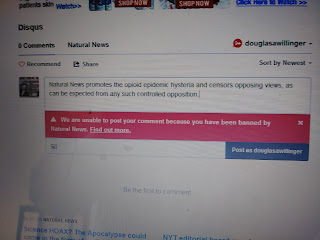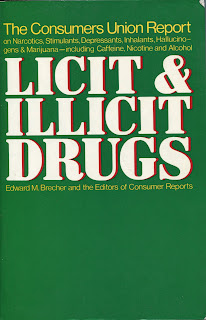Opioid Prescriptions Down; Deaths Up, NY Times reports
http://www.nytimes.com/2016/05/21/health/opioid-prescriptions-drop-for-first-time-in-two-decades.html?_r=0(excerpts)
"...for each of the past three years — 2013, 2014 and 2015 — prescriptions have declined, a review of several sources of data shows."
" IMS Health, an information firm whose data on prescribing is used throughout the health care industry, found a 12 percent decline in opioid prescriptions nationally since a peak in 2012. Another data company, Symphony Health Solutions, reported a drop of about 18 percent during those years. Opioid prescriptions have fallen in 49 states since 2013, according to IMS, with some of the sharpest decreases coming in West Virginia, the state considered the center of the opioid epidemic, and in Texas and Oklahoma. (Only South Dakota showed an increase.)" ...
... One important development that may have helped propel the decline came in 2014, when the federal government tightened prescribing rules for one of the most common painkillers: hydrocodone combined with a second analgesic, like acetaminophen. In the first year after the measure took effect, dispensed prescriptions declined by 22 percent, and pills by 16 percent, according to an analysis in JAMA Internal Medicine. Refills — which the change made much more difficult — accounted for 73 percent of the decline.
Yet:
" So far, fewer prescriptions have not led to fewer deaths: fatal overdoses from opioids have continued to rise, taking more than 28,000 lives in 2014, according to the most recent federal health data. That number includes deaths from both prescription painkillers, like Percocet, Vicodin and OxyContin, and heroin, an illegal opioid whose use has been rising as access to prescription drugs has tightened."
The NY Times article reports this has led to a controversy.
Indeed, such efforts have led to a growing fear among doctors to prescribe opioids in general.While experts agree that the decline is real, they differ on what it means for patients. Some say opioid prescribing has been too loose for too long, and that it must be tightened, even if that means extra hurdles for patients in pain.“The urgency of the epidemic, its devastating consequences, demands interventions that in some instances may make it harder for some patients to get their medication,” said Dr. Nora Volkow, the director of the National Institute on Drug Abuse. “We need to set up a system to make sure they are covered. But we cannot continue the prescription practice of opioids the way we have been. We just can’t.”Others argue that efforts to rein in prescribing have gone too far and are penalizing patients who take the medicines responsibly and need them for relief.
“The climate has definitely shifted,” said Dr. Daniel B. Carr, the director of Tufts Medical School’s program on pain research education and policy. “It is now one of reluctance, fear of consequences and encumbrance with administrative hurdles. A lot of patients who are appropriate candidates for opioids have been caught up in that response.”...
... Dr. Mitchell Stark, an oral surgeon in Rockville, Md., said he cut his opioid prescribing this year after reading an article about teenagers getting addicted after having their wisdom teeth removed. Now he tells even patients recovering from multiple extractions to try prescription-strength ibuprofen first.
Yet further restricting prescriptions for opioids has led to other worsening problems.“I don’t want to be the person who gets a call from someone saying, ‘My kid had an overdose with the Vicodin he had left from getting his wisdom teeth out,’” Dr. Stark said.
Many experts say that the drop in prescribing is at best a half victory, in light of the rise of deaths from heroin and illicit fentanyl, a powerful synthetic painkiller. Some addicts who started with prescription painkillers are merely turning to such street drugs or getting their hands on prescription drugs by other means.“We are seeing, in our area, many more pharmacies being robbed,” said Dr. Richard Vaglienti, the director of outpatient pain services at WVU Medicine, a health system in West Virginia.
Interestingly, these policies relay heavily upon lumping different matters together.
Different types of users.
And especially, different types of opioids in general, particularly the lumping together of pills which are of known predictable potency, with black market 'heroin' of vastly variable potency, and even adulterated with far far stronger opioids as fentanyl.
It is as if they view predictability of potency almost irrelevant.
Let alone the type of user. Such as those who take relatively modest doses, versus those that massively escalate their doses, especially those who instead take them not orally by mouth as intended, but those who grind them up to sniff them or to dissolve in a solution to be injected.
The May 21, 2016 NY Times article does not delve into any of this, including neglecting to mention that escalation to serious physical addiction via overuse-abuse is confined to a small minority of prescription receivers. In other words, punish most consumers for the actions of a small minority, never-mind that such would be seen as insane if for instance applied to consumers of alcoholic beverages (despite alcohol actually being far more potentially toxic than opioids!!!).
Nor does it delve into the matter qualitatively, by choosing to focus simply quantitatively upon the number of prescriptions and pills for such issued. Though it quotes NIDA's Nora Volkow as saying that "... we cannot continue the prescription practice of opioids the way we have been. We just can’t...", the article simply fails at any analysis that is qualitative rather than quantitative. For instance, failing to ask such questions as:
- why prescribing doctors insist that opioids be taken regularly rather than more infrequently.
- why they must only be made available in far more easily abuse-able concentrated forms.
Educating people on how to use and how not to uses opioids would reduce problems as overdoses. Such as do not take too frequently, nor escalate the dosage to compensate for tolerance, nor mix with certain other drugs, as many fatal overdoses involve such, rather than an opioid alone.
Making opioids available in safer forms, such as those more dilute and perhaps not very tasty would likewise discourage overuse.
Likewise, the availability of products to occasionally 're-set' one's level of tolerance, such as with Iboga-Ibogaine, as an alternative to more synthetic forms of opioids as methadone and buprenorphine that require regular use and may be more physically addictive than the opioid they are used to replace.
Education, combined with safer forms would serve to counterbalance making opioids more available, while undercutting the black market.
Current policies to not educate people, to increase doses, to provide only in abuse-able concentrated forms, and to encourage continued use via such highly questionable more recent practices as drug testing patients to ensure they are taking their opioids frequently, and cutting off such prescriptions, all serve to steer people towards black market heroin.
Even reforming the prescription system to allow metered, rationed refills over longer periods of time, based upon a patient's needs -- aka injuries -- would be a step in the right direction. Since many people have suffered like injuries, why has not the medical profession developed a guide for such a rationing, at least for lower doses? Indeed, why has the medical profession so tolerated a government meddling in medical prescribing since 1915, so lacking in any concrete definitions of "professional [medical] practice", since the initial 1914 U.S. Harrison Act's delegation of regulatory authority to the U.S. Department of Treasury?!
If the State of Montana's "reasonable and prudent" speed limit could be struck down as unconstitutionally vague, how about the entire regulatory meddling in opioid availability?
Why is the medical profession generally so complacent?
Why do they not challenge such policies?
Because current policies are designed primarily to increase costs and thus profits.
Reforming opioid availability would reduce the need for separate visits to a doctor for each refill.
More dilute forms of opioids to displace pills would mean less profit per shelf space.
More alternatives, particularly those for reversing tolerance, would undercut the "treatment" industry empire, including that of methadone, buprenorphin, all requiring separate visits to doctors, let alone the cultivated guilt placed upon addicts to opioids dissimilar to those of say nicotine.
Thus they choose to blur together different types of users, along with different general types of opioids- aka measured dosage pills with variable strength 'heroin, to actually undermine health, including by undermining efforts to provide safer legal forms of opioids to consumers- never-mind that opioids are arguably far far less toxic than the abuse of alcohol let alone the regular use of mass marketed Tobacco.
For what they are doing is part of a political agenda, to maintain a set of policies set in place during the early 1900s- which includes the "great" drug war, as part of a broader agenda of centralized control over the fields of medicine and diet.
One that was sold to the public as a means of serving their health, but in fact subvert such by interfering with markets to reduce choice for the benefit of those interests that saw and used such means to protect and advance their own markets via criminalizing their competitors.
From the numbers of medical schools and health care providers- aka the American Medical Association/Flexner Report.
To the types of drugs in use, via a process of elimination favoring not what was necessarily safer, or more effective, but rather what was more potentially profitable if not better established.
As with any propaganda campaign designed to deceive, that which brought this agenda about had its share of terms used to confuse the general public. "Patent Medicines" in fact would be those that would be patented as they were man-made rather than natural creations- aka pharmaceuticals rather than herbs, plants found in nature. Yet that term would be flung at what were actually "proprietary" medicines -- trademarked names upon man-made mixtures of natural substances as extracts of herbs, which could not themselves be patented and thus could not be monopolized, and which were generally preparations- products that were dilute liquids intended to be drank, and hence far bulkier than highly concentrated powders and pills. Hence, scaring people away from un-patentable herbs and bulky liquid medicinal products meant using such prerogatives as "nostrums" and 'quackery". And such a disfo campaign, as that promoted in the ironically named "The Great American Fraud" article series in Colliers Magazine authored by the 'muckracker' Samuel Adams Hopkins in collaboration with U.S.D.A Bureau of Chemistry Chief Harvey Washington Wiley (who also served with the American Medical Association-American Pharmaceutical Association), would rely heavily upon confusing the potential dangers of highly concentrated derivatives as morphine and cocaine in powder forms with the parent substances of Opium and Coca, with an utter disregard of dosage matters of potency and route of administration.
As could be expected with such a deceptive campaign, it was used to achieve passage of the U.S. Foods and Drugs Act of 1906, that, though not outright prohibiting any substance, would be the steeping stone to prohibition. Ostensibly, it mainly required the labeling of the amount of certain substances in food and drug products; yet, the 1906 Act would grant dictatorial power to Wiley's U.S.D.A. Chemistry Bureau to prohibit from interstate commerce any product containing a substance which he/it deemed 'dangerous' or 'deleterious to human health' - without any required scientific backing! Though the Act would for instance include cocaine as a substance required to be labeled, Wiley's Bureau wasted little time in prosecuting beverage manufacturers for "adulteration" for containing a supposedly dangerous and deleterious ingredient, with absolutely no showing of any actual harms to health for the relatively low concentrations of cocaine present, generally 1/2 to 3 milligrams per fluid ounce, and never-mind the implied legality via cocaine's inclusion within the labeling requirement list not only for products sold as medicines but as well as those sold as foods (aka more frequent use). The subsequent push to eliminate cocaine, irregardless of how dilute and harmless the amount, from commercial products, including those sold as medicines, came with the legislative campaign to limit such products to prescription use only, and make such prescriptions non-refillable. Such was what brought about the U.S. Harrison 'Narcotics' Act of 1914. Though that Act would still allow over the counter sales of lower potency opiate preparations containing under "two grains of opium, or more than one-fourth of a grain of morphine, or more than one-eighth of a grain of heroin . in one avoirdupois ounce", it made no such allowances for cocaine, regardless of how low the amount.
As should be expected from such a deception, this campaign was not about reducing addiction nor serving the public health.
It grossly confused Opium and Coca with highly concentrated forms of opiates and cocaine, thus rendering any such remaining popular use of such substances in their most dangerous forms, owing to the dynamics of prohibition 's iron law of shifting availability to ultra concentrated forms.
Though it arguably reduced the total size of the drug using population of opiates and cocaine, it hardly reduced the overall size of the population of people who used drugs as it served to protect and promote other competing drugs- particularly mass marketed Tobacco.
Such were more physically addictive than even heroin, and far deadlier from chronic use.
That latter fact can be true regarding non opioid pain killers, as Tylenol with their ill effects upon the liver.
Yet one would not likily realize this from the relative official attitudes towards these different classes of substances.
See also:
http://freedomofmedicineanddiet.blogspot.com/2016/03/more-reporting-should-be-done-on-lives.html
http://freedomofmedicineanddiet.blogspot.com/2016/02/how-about-methadone-model-for-nicotine.html





Comments
Post a Comment